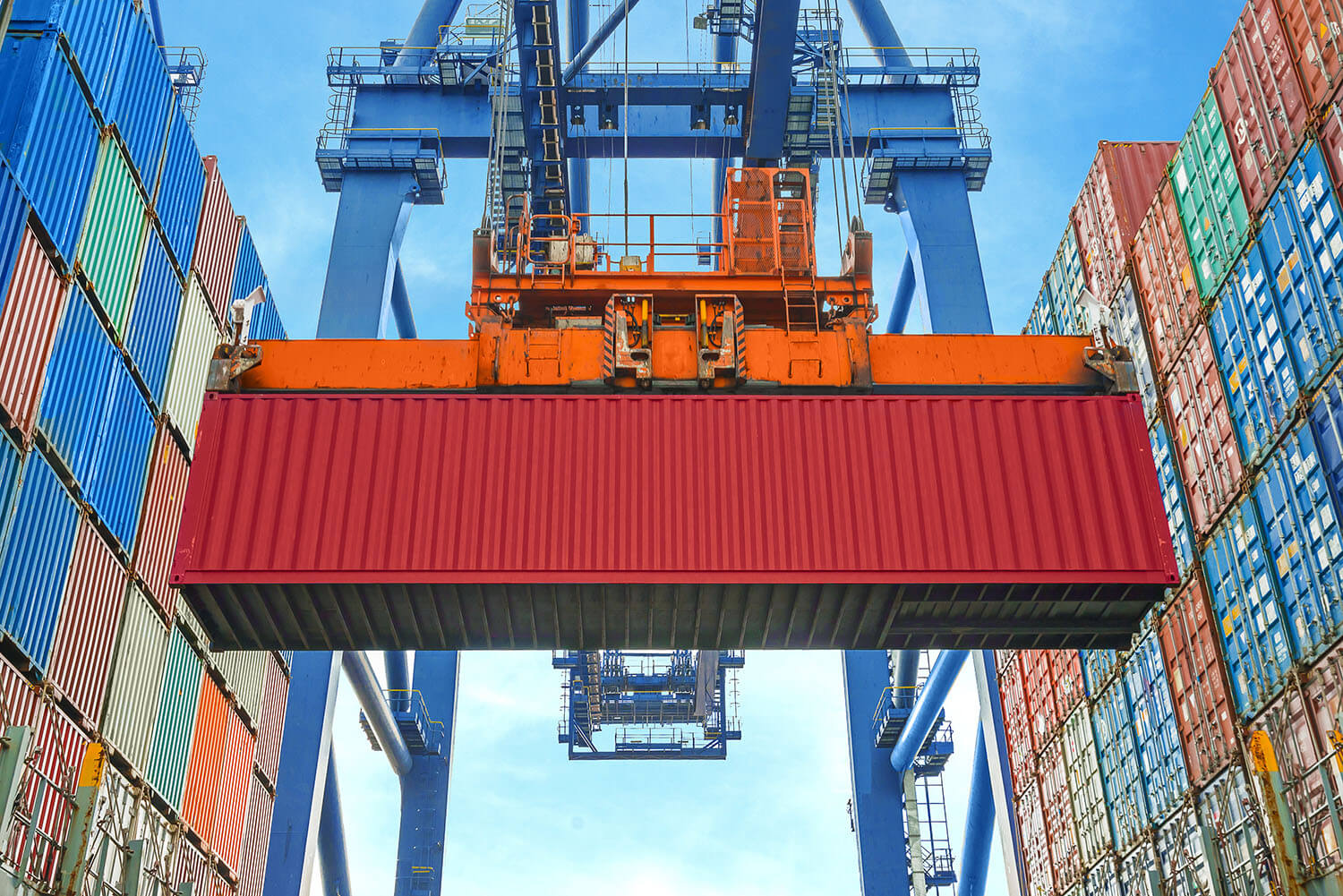
Each year, countless tons of cargo are stored and transported across the globe in shipping containers. In fact, cargo ships carry more than 80% of the global volume of trade each year.[1] As of 2019, the international liner shipping industry transported 11 billion tons of goods worth approximately $14 trillion in millions of containers.[2]
Safely transporting cargo is a top priority in container shipping. Unfortunately, shipping container condensation presents an immense challenge for anyone transporting goods with shipping containers. The resulting moisture damage can lead to thousands or even millions in losses.
Learn more about shipping container condensation and what you can do to protect your cargo and your bottom line.
Shipping container condensation is any moisture that collects on the inside of a shipping container while it’s being stored or transported.
So, why does this condensation occur? When the air inside a shipping container has reached its dew point, it can no longer contain moisture. This moisture is attracted to the interior walls of your container in the form of condensation.
There are several factors that can contribute to shipping container condensation, including:
Container rain is when condensation collects on the top of the inside of a shipping container. As this condensation builds up, it eventually drips down onto the cargo below as a result of gravity. Container rain is the biggest concern when it comes to moisture.
Shipping container condensation is harmful no matter where it forms, causing damage that can cost you a fortune. In fact, container rain and condensation are two of the leading causes of cargo damage in shipping containers. Some of the problems condensation can cause include:
While one incident may be manageable, repeated losses over time can devastate a business. And cases of cargo loss aren’t isolated; an estimated 10% of all containerized goods are discarded due to moisture-related damages.[3]
The first step to eliminating shipping container condensation is measuring moisture levels inside your shipping container. You can use a remote sensor in your shipping container to monitor moisture levels in real time from anywhere.
Smart sensors allow you to track temperatures and moisture levels as your cargo moves toward its destination, so you know as soon as you’ve got a problem.
If you’ve used a sensor and identified moisture problems inside your shipping containers, it’s not too late to take action to protect future shipments.
There’s no way to entirely eliminate moisture inside shipping containers — especially with fluctuating temperatures during global shipping. Fortunately, you can use these six tips to keep your cargo dry and avoid sensitive cargo damage.
The pallets you’re using might be contributing to high moisture levels inside your shipping container. Wood pallets that are made from fresh lumber need time to dry before being used in a shipping container. Even if your pallets aren’t made from new lumber, they can absorb moisture from the air if they are stored in a cool or moist area.
Using plastic pallets is an easy way to minimize moisture. There are also absorbent blankets that can protect pallets of cargo from moisture.
2. Use desiccants
Desiccants use adsorption to remove excess moisture from the air, keeping your shipping container dry and reducing the risk of container rain. Desiccants are available in several forms, including:
Dehumidifiers can be a smart solution if you use shipping containers for storage. If you have a power source nearby your shipping container, try running a dehumidifier inside the container to eliminate moisture.
Keep in mind that you’ll need to check and empty your dehumidifier regularly if you don’t have a hose set up for drainage.
Insulating shipping containers prevents extreme temperature fluctuations that can lead to condensation. Temcore container liners are an excellent choice.
Temcore thermal liners feature a five-layer design that offers total protection against extreme temperature fluctuations. Our container liners are also easy to install — all you have to do is attach the click-on-top hanging system to the D-rings inside your shipping container.
Since Temcore liners create a strong seal around the interior of your shipping container, they can also prevent spoiling and cargo damage caused by contamination.
As long as the contents of your container are warmer than the dew point, condensation shouldn’t be an issue.
Is your shipping container ventilated properly? Proper ventilation helps equalize interior and exterior temperatures to reduce the likelihood of condensation.
Ventilation isn’t always the right answer — especially if you’re shipping or storing goods in a moist climate. If the air is filled with moisture, ventilation will bring that moisture in.
If you’re shipping particularly sensitive cargo, it’s important to consider your shipping route. Some shipping routes will expose your cargo to significantly higher moisture levels or extreme temperatures, so choosing a more forgiving shipping route can help you reduce cargo damage.
As tough and durable as they may seem, shipping containers can get damaged. Check your shipping container to see if there are any cracks or holes that might let moisture in. Significant damage may mean it’s time for a new shipping container. Here are some signs it might be time to replace your shipping container:
Protecting your cargo is crucial, and stopping condensation is a major part of that. Using desiccants, non-absorbent pallets, and insulation can help you save millions in potential losses.
Eurolog Packing Group makes it easy to find the ideal shipping solutions for your needs. With several preexisting and custom solutions, we can help you put a stop to condensation so you can rest easy knowing your cargo will safely reach its destination.
Check out our selection of shipping container solutions online and contact us if you have any questions.

Sandra Malouf is the President of Eurolog Packing Group and has spent her career focused on Industrial Packaging. With a proven track record of helping businesses avoid supply chain disruptions, Sandra’s visionary leadership elevates the industry. She’s committed to developing sustainable practices and continues to shape the future of industrial packaging by listening to the customer and offering unique solutions applicable to various industries across the world. The company’s main focus is temperature stabilization and moisture damage prevention in exports affected by extreme variations in global temperatures.
© 2025 Eurolog Packing Group